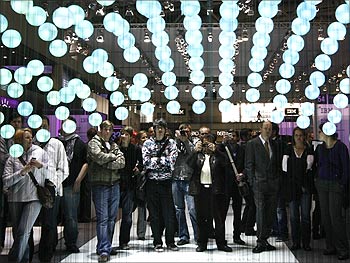1. Growing adoption of virtualization
Despite its obvious benefits in operational efficiency, footprint and power consumption reduction, largely virtualization has been utilized in the data center infrastructure servers, storage and so on. In 2010, we anticipate greater adoption of virtualization for desktops.Although the primary reason for slower adoption of desktop virtualization is the complexity of its technology and its impact on end-user experience if not done properly, one cannot undermine the advantages it offers in terms of better management and cost efficiencies.
There is considerable progress being made in enhancing user experience and reducing complexity for 'virtualizing' desktops thereby boosting its demand in the coming year. . . .

2. Redesigning applications for cloud models
Cloud computing is certain to witness greater adoption in 2010, especially from an applications perspective. As tools and platforms mature, more and more applications will get built into the cloud than what has been witnessed in the last one year.
Hitherto adoption of the cloud model and underlying technologies such as virtualization have been largely tried out in converting 'infrastructure' into a 'service'.
The next level of evolution is taking this to the platform and application level. Enterprises will begin to re-architect their legacy application portfolio to suit this new virtualized environment.

3. Corporate applications on mobile device
There will be a spurt in the usage of mobile devices that allows us the liberty to not necessarily be physically connected to a corporate network to access information.
While smart phones form a large chunk of this trend, there are other specialized mobile devices enabled with wireless communications capabilities in which corporate applications can be accessed.
For instance- mobile point of sale terminals. We see mobile technologies as an underlying technique for delivering corporate applications for people on move.

4. Social networking for corporate interactions
Social networking is ubiquitously used for engaging and interacting amongst family and friends.
But we now see the technology and platforms built for essentially personal and social interactions catapulting to the next level to serve the purpose of corporate interactions.
One will see very interesting applications being built on social networking platforms as a collaborative tool for geographically dispersed teams to work together more closely. Google Wave is a good example of this trend.
5. Green computing
Considering that cost savings and energy efficiency are two sides of the same coin, this will drive greater adoption for Green computing among enterprises.
Companies are now looking to use data centers that are modular and standardized, allowing optimization of their power consumption.
Touted as Performance Optimized Data centers (POD), they give more flexibility to customers balancing their capital expenditures and operating expenses while quickly and seamlessly meeting their needs for additional capacity.